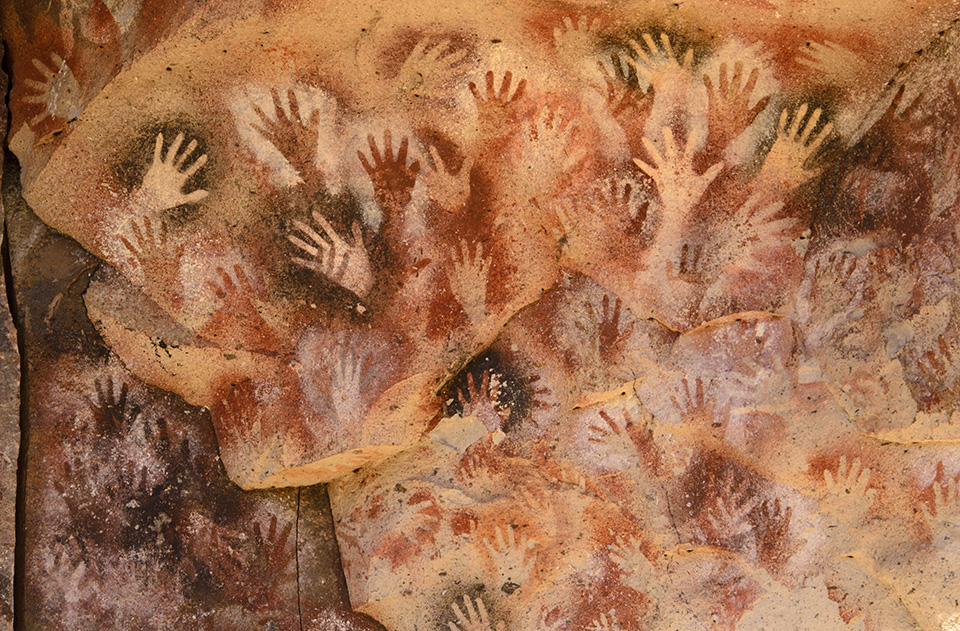
Aboriginal paintings, Cave Hands, Patagonia, Argentina.
by John Köehler
Publisher and author of seven books
I shall be giving a Keynote address soon at a writer’s symposium. I know that I do not want to bore the audience with comments and facts about the publishing industry, or experiences I have had as a publisher since 2010. Partly because I will be doing that at a workshop the next day.
And partly because I want to speak to them as a fellow writer, and talk about why it is that we write. What causes us to devote so much time to recording our thoughts, and then sharing them with others? Where do the compulsions that we feel, and the obsessions that push us to write come from?
Why do we write?
It seems a simple question. My first thought was to hearken back to the time when people lived in caves. Writing did not exist, yet they managed to record their existence and their community and lives by way of beautiful drawings and paintings made on the walls of the very caves that served to house and protect them.
Even then pre-historic people felt the need to record their lives for us to find many thousands of years later when the caves were discovered. “Ten hunters with spears found 12 mastodons and killed three near winding river where birds live,” the drawings seem to say. Or perhaps with the hand prints they are saying, “23 are in our clan. Big and small. We are like the stars.” Primitive and crude, yet beautifully accurate.
So here we see a connection with early “writers” who came before us, always yearning to leave some significance of themselves for future people to see that they were important. That they lived. That they mattered. That they should be remembered.
Does this need to be remembered still infuse modern writers’ purpose? Yes, I think it does. I do not mean in some huge egotistical way. But truly like the shamans and artists of the caves, who felt it was spiritually and emotionally important for their people to make a record that promised they would live on after they were gone. A kind of “Killroy was here” statement and mark to leave behind so that they would survive after death. A method for the writer to state that they have something important to share. Whether fiction or non, it does not matter, for it comes out of the desire of the writer to be remembered.
Otherwise why share the work?
The rule of art in part establishes that first the artist must please herself. Whether painter, musician, sculptor or writer, the creation of the art is done initially to please the artist, in this case the author. Then if the artist is pleased, a time may come when she wishes to share it with trusted friends and colleagues, and then perhaps … complete strangers.
But what if they do not like it? What if she is ridiculed or put down by critics or readers? In the end we talk ourselves out of keeping our work to ourselves and put it out there for all to enjoy. Or hate. Because this need to share and record our lives through our art is so compelling—as much as it was during the time of the caves—that we must let others see a piece of who we are and acknowledge our existence.
So that we can—like our ancient forebears—become forever a part of history.
